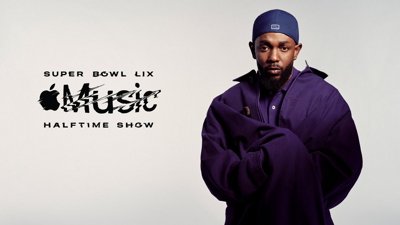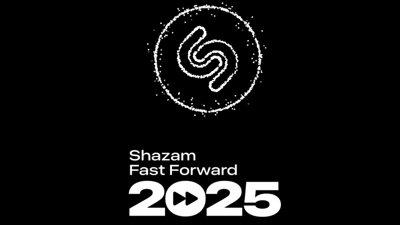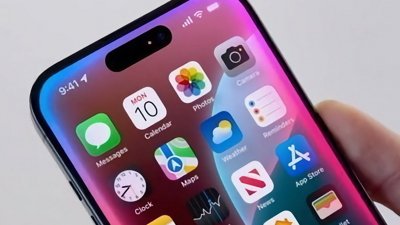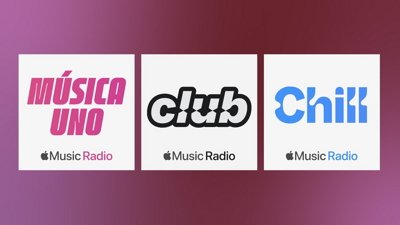Apple's move to streaming came when Spotify dominated the market, so Apple purchased the Beats brand for $3 billion in its biggest acquisition. The headphone business continues to operate within Apple, but the digital music service called Beats Music transitioned into Apple Music.
The service launched at $9.99 per month, but Apple increased the subscription price to $10.99 for individuals and $16.99 for families in late 2022. It is still included with all Apple One subscription bundles.
Apple Music Features
The music service has always existed on three primary tent poles: human curation, personalization, and 24-hour live radio. From there, Apple has branched its streaming service into a monolith capable of competing directly with Spotify and YouTube Music.
Human Curation
Apple employs music experts and brings external talent to curate playlists based on specific genres or moods. The early version of this feature saw playlists from influencing companies and curators like MTV, but Apple has become more and more involved in curation.
Custom playlists are maintained weekly, featuring custom artwork. As of iOS 14, the artwork is animated when browsing the Music app.
The human element goes deeper than playlists, as Apple has its own host of live radio shows, interviews, and concert films under the umbrella of Apple Music radio.
Artists and users can curate their content too. Each user gets an optional public profile with their latest tracks and public playlists. Users can follow each other and artists to see what content they listen to.
Apple also curates a few specialty playlists that encompass many genres and styles. These playlists serve as a great starting point for any user, whether new or veteran.
The flagship playlist is called "New Music Daily" and includes a new artist and song every day. The playlist maintains 100 songs at all times, and the playlist description will change to describe the latest addition each day. Apple intends for this playlist to show users new music that appeals to everyone.
Apple promotes new artists and their upcoming music using the "Up Next" playlist. Each update brings a new song from an artist that curators think will be the next big thing.
Other popular playlists include genre-specific playlists like "Today's Hits" and "Rap Life." There are curated sets and playlists for every genre and mood.
Personalization
While the human element is a big part of Apple's streaming service, algorithms are too. As you listen to music, mark songs you like, dislike artists, and add music to your library, the algorithm will learn what you like.
When creating an account, you are taken through an onboarding process that gets a base sample of what you like. Each interaction in the app shapes the user's algorithm profile.
Within the "Home" tab, there are curated music selections based on this information. There are also multiple playlists updated each week:
- New Music Mix
- Favorites Mix
- Chill Mix
- Friends Mix
- Get Up! Mix
- Heavy Rotation Mix
New Music will guess what new music you like while Favorites pulls from your listening history. Chill plays lower BPM based on your likes, Get Up! plays higher BPM, and Friends will curate music based on your friends' listening. These playlists are updated once a week.
Unique playlists are generated based on your listening habits across an entire year. "Apple Music Replay" functions as an algorithmic look back at your music taste and how it changes year to year.
Replay playlists become available at the beginning of the year and are updated each week until the end of the year. At the start of a new year, a new playlist starts. There will be a Replay playlist for each year since you created your account.
There are also algorithmic radio stations that play music based on the user's history and tastes. The Personal Station focuses on music in the library and surfacing old likes and adjacent music, while the Discovery Station focuses on never-heard-before music.
Apple changed likes, represented by a heart, to favorites, represented by a star, in iOS 17.1. The new system automatically adds a favorited song to the user's library and includes it in a new Favorites playlist.
Apple Music TV
Apple Music TV is a 24-hour music video streaming channel. The channel plays a curated list of music videos throughout the day, with some video interviews and specials shown intermittently. It is a throwback to the old days of MTV when you could tune in at any time to see all the most popular music videos.
Apple has shown increasing interest in music videos since its streaming service launched. It started with investments into exclusive music videos and slowly evolved into this streaming channel. You can view Apple Music TV within the Music app or TV app.
Apple Music Radio
When Apple's music service launched, the company started a live radio station called Beats 1 Radio. This station was a 24-hour radio show with a rotating schedule of 12 hours of live performances, then 12 hours repeating that content.
Launched in over 100 countries, the station matured with many blockbuster artists hosting their own shows. Now that the service is over five years old, Apple transitioned the radio brand into Apple Music Radio, and the Beats 1 station is now Apple Music 1.
The change brought two new radio stations – Apple Music Hits and Apple Music Country. Each of the three channels retains the same concept of a 24-hour live radio station with rotating artist shows.
The Hits channel focuses on the last 40 years of popular music, with artists like Snoop Dogg and Alanis Morissette hosting shows. Country focuses on the sound of country music and the superstars within the genre like Carrie Underwood and Dierks Bentley.
Apple Music 1 continues Beats 1's styling with a focus on modern hits worldwide. When Beats 1 first launched, criticism centered on a lack of variety outside Hip-Hop, House, and Pop. The new stations directly address those issues.
While these stations all perform live all day, listeners can stream the show on-demand if a listener has a favorite show. The live stations are all free and do not require a subscription. However, replaying old shows requires an active subscription.
High-Fidelity and Spatial Audio
Apple has launched its long-rumored high-fidelity music service within Apple Music. There are different formats available for lossless audio, and some songs may be formatted with Dolby Atmos and Spatial Audio.
One tier is called "lossless" at 24-bit/48 kHz, or CD quality. An even higher tier is called "hi-res lossless" with 192 kHz audio. All users can enjoy lossless music without additional hardware, but the connected headphones or speakers must support lossless playback.
Due to the format used, FLAC, and the bit rate, AirPods will not support lossless audio. Even the AirPods Max cannot support lossless or Hi-Res audio with the Lightning to 3.5mm cable.
Hi-Res audio requires a wired DAC and compatible headphones to take advantage of a high-quality audio file. Only those who care extensively about their music quality will bother to take advantage of this tier.
Along with the higher quality audio files, Apple introduced a new way to hear music: Spatial Audio and Dolby Atmos. Apple's naming scheme for these 3D audio formats has created plenty of confusion, but the distinction is simple.
Dolby Atmos centers the audio around the listener's head, and Spatial Audio places the audio centered at a fixed point in space. All W1 or H1 chips will automatically play Dolby Atmos audio when that feature is enabled from the Settings app.
Apple Music with Dolby Atmos automatically plays on:
Apple says that Dolby Atmos tracks will work on headphones without those chips, but users will have to enable the feature manually. Once available, navigate to Settings -> Music -> Audio and set Dolby Atmos to "Always On."
Spatial Audio will only work with AirPods Pro and AirPods Max since it relies on gyroscopes to detect head position. The music is placed at a fixed point and allows the user to turn their head within the 3D audio space.
Apple Music Sing
Apple introduced a new feature to pair with its time-synced lyrics called Apple Music Sing. It launched in December 2022 and works on iPhone, iPad, and Apple TV 4K.
The new feature shows the exact syllable that is being played in the current song, so users can sing along. There is also now a separate volume slider to turn down the vocals so singers can be heard in a more karaoke-like fashion.
There are different modes for background vocals, duets, and choruses that highlight text for individual parts. Apple introduced over 50 custom playlists for Apple Music Sing that highlight specific genres and categories.
Apple Music Voice Plan (Discontinued)
During Apple's "Unleashed" event in October 2021, it announced a new lower tier of Apple Music. The Voice Plan was only $4.99 per month and gave users access to all songs and playlists on the service with one catch — all interactions were made via Siri.
The Music app UI was exchanged for a list of example commands users can give Siri to get access to a playlist. If users knew the name of a song, artist, or album, they could request it with a voice command, but not through UI.
This streaming tier appeared to be a competitor with the Amazon Echo single streaming package. Unlike Pandora and other competitors like Spotify, this tier was still paid and didn't limit skips or embed ads.
Apple discontinued the Apple Music Voice plan in November 2023 without any reason given. Between what was likely a low adoption rate due to better free alternatives and increasing licensing costs, the tier didn't make sense for Apple to maintain.
Streaming wars
The same idea around unlimited streaming drives both Apple's service and Spotify. As of October 2019, Spotify announced that it had 248 million users compared to Apple's 60 million. However, most of Spotify's users are on the ad-supported free version, with only 183 million* paying for the premium service. *February 2022
Spotify's numbers are still nearly twice Apple's user base, but Apple reached that number in less than half the time. This can be attributed to the default music app on the iPhone offering the service and the education of the market surrounding streaming in 2015 versus 2008.
Apple does not let users select a default streaming service on iPhone, iPad, or HomePod. This has contributed to anti-trust investigations into Apple's streaming platform and whether it has too much power within the Apple ecosystem.
Apple attempts to diversify itself through exclusive deals and radio programs. Apple frequently bids on entertainment deals for live show streams or concert films.
A one-month free trial is available to all new subscribers, reduced from three months in February 2021. Apple also often includes additional free trial months to new users with product purchases or other promotions.
Initially, artists and musicians were not going to be paid for their music's use during free trials. Following protests from the likes of Taylor Swift, who pointed out that free streaming would impact album sales, Apple recanted. Apple now pays artists regardless of a user's trial status.
On the other hand, from the start, Apple has been a better payer for artists than its rival services. By contrast, the likes of Spotify often find themselves in lawsuits for missing payments or underpaying artists or even stealing music outright.
Overall, Apple's music platform and the paid premium tier of Spotify have contributed to the music industry's financial fortunes improving.
However, there have also been what is now called streaming wars, when one service will arrange an exclusive deal with an artist that excludes others.
For example, in 2016, Frank Ocean released the album "Blonde" to Apple Music and iTunes for a two-week exclusive. It was reportedly Ocean who decided to do this, the album's record label was not involved, and the album's record label was not amused, either.
Universal called for an end to exclusives. Speaking later for Apple, Jimmy Iovine distanced Apple from the whole arrangement.
"We had a deal – we were working with Frank Ocean, and he controlled where his music came out," Iovine said. "Why would it be in our interest to be part of a fast one, a slow one, or any one? We were getting the record no matter what. Whatever happened with him and Universal is really between him and Universal. It has nothing to do with us. Nothing."
Speaking of putting distance between artists and the streaming service, Apple shut down its much-touted Connect feature in December 2018. This music social-media service was intended to connect artists and audiences, much as Apple's previous Ping service had.
It wasn't the same as Ping, but it met the same fate. Since then, Apple has reached out to Genius, a service that interviews artists about their music and provides lyrics to supply content to Apple exclusively. Artist bios and album descriptions, along with Beats 1 interviews and radio shows, still allow users to connect with their favorite artists, but this isn't as direct a social connection.
Apple has started a $50 million fund for indie music labels and distributors. This is to combat the industry's financial strain caused by the lack of live shows during the global COVID-19 pandemic.
It appears that the fund will go toward one-off advance payments pulled from future artist royalties. Only labels and distributors with a direct distribution deal with Apple qualify. Those that do must also meet a minimum of $10,000 in quarterly earnings on the service. The limitation rules out indie labels distributed through more prominent labels.
Another initiative called "Stream Local" was created to promote South African musicians during the crisis. Starting on April 11, 2020, users can check out playlists and albums in a special section of the App Store featuring popular South African artists.
Ongoing Updates
Autoplay Mode, designated by an infinity (∞) symbol, has been added to allow users to stream music endlessly. First, the Music app will play all queued songs, albums, and playlists. Once finished, it will play music based on music in your library and playlists, similar to an existing Spotify feature.
Once titled "For You," the original landing page was rebranded to "Listen Now." The tab serves as a one-stop shop for all your favorites and curated playlists for your mood. There are widget-style tiles within this tab, making using the app more accessible and visually appealing.
It also brings in new Stations For You features, focusing on artists you actively follow. Lastly, the tab also includes "Friends Are Listening To," allowing you to see what music your friends are into lately.
iOS 14 also received a new search tab, with an overhauled autocomplete feature, suggested categories, and updated filter settings to find exactly what you want to listen to.
In iPadOS 14, the Music app looks more akin to the macOS version. It allows users to browse quickly via an easy-to-use sidebar. The sidebar is customizable with collapsable sections, allowing users to tailor the experience to what they prefer.
iPad can also take advantage of a full-screen Now Playing experience. You can easily toggle between seeing time-synched lyrics or the Up Next queue, too.
Thanks to Apple's integration of ShazamKit, Apple Music can now detect which songs are used in DJ sets and ensure they are counted for compensation. The new feature comes with better integration for DJ sets and more intelligence surrounding a setlist.
The Voice Plan operates only with Siri, so Apple needed to add content that would be easily findable by voice. So, in October 2020, Apple added hundreds of human-curated playlists based on mood, event, or action.
In December 2022, Apple launched Apple Music Sing, a new feature based on the live lyrics view that let users sing along. Vocals can be turned down to ensure the instruments and singing participants are front and center.
Apple Music Classical launched as a separate app in March 2023. It features curated classical content with extra metadata and other information not available in the regular Music app.
It is included at no additional cost for Apple Music subscribers. The user-focused algorithm that generates playlists and recommendations is affected by music listened to in both classical and regular apps.
Collaborative playlists are coming to Apple Music in a late-2023 iOS 17 update. It will allow users to share playlists, and each added user gets to contribute songs.
SharePlay is improved in CarPlay, allowing passengers to join the now-playing session. People who are in the driver's contacts will be able to join automatically, and a QR code will let anyone else join.
Favorites were introduced in iOS 17.1 and iOS 17.2 brings the new Favorites playlist. Users can also create shared playlists where participants can edit the playlist together.
Pricing
The regular subscription price is $10.99 per month for one person. There's also a family subscription option for $16.99 per month for up to six people in the same household.
Apple also offers a student rate of $4.99 per month, and there is a one-month free trial for any user.
The service is also included in Apple One bundles, which launched in late 2020.
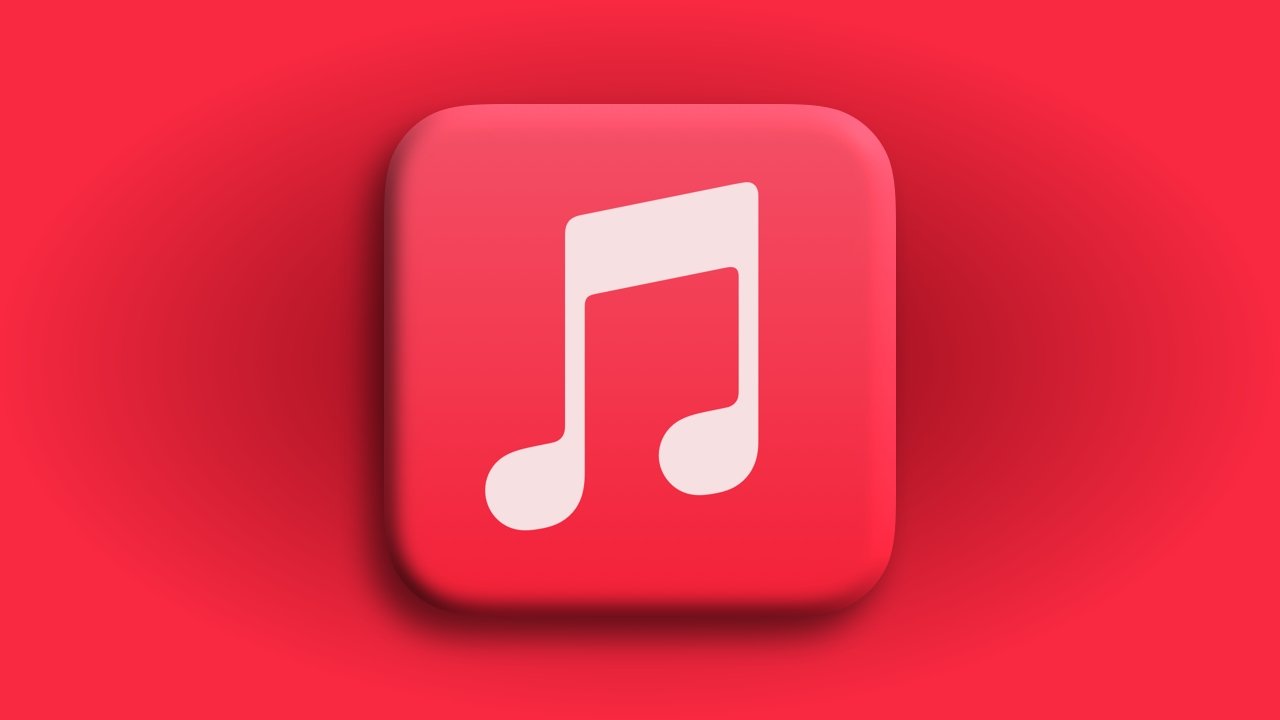

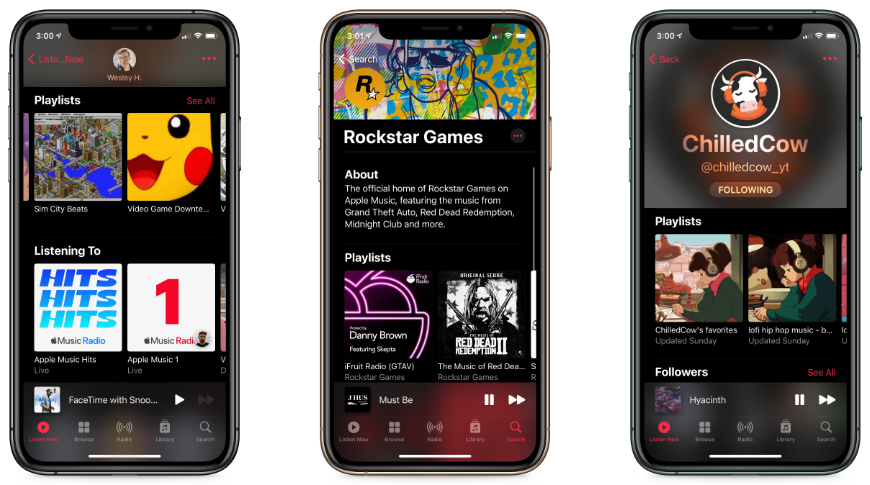
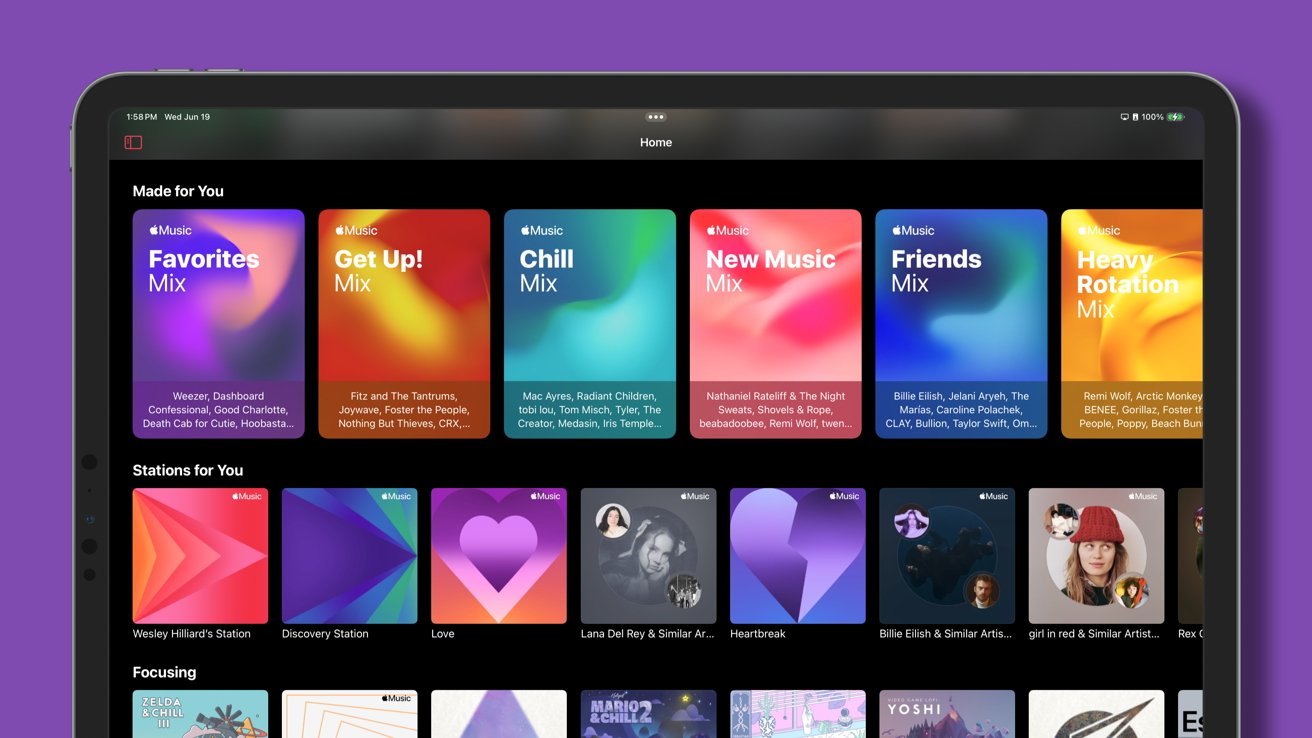
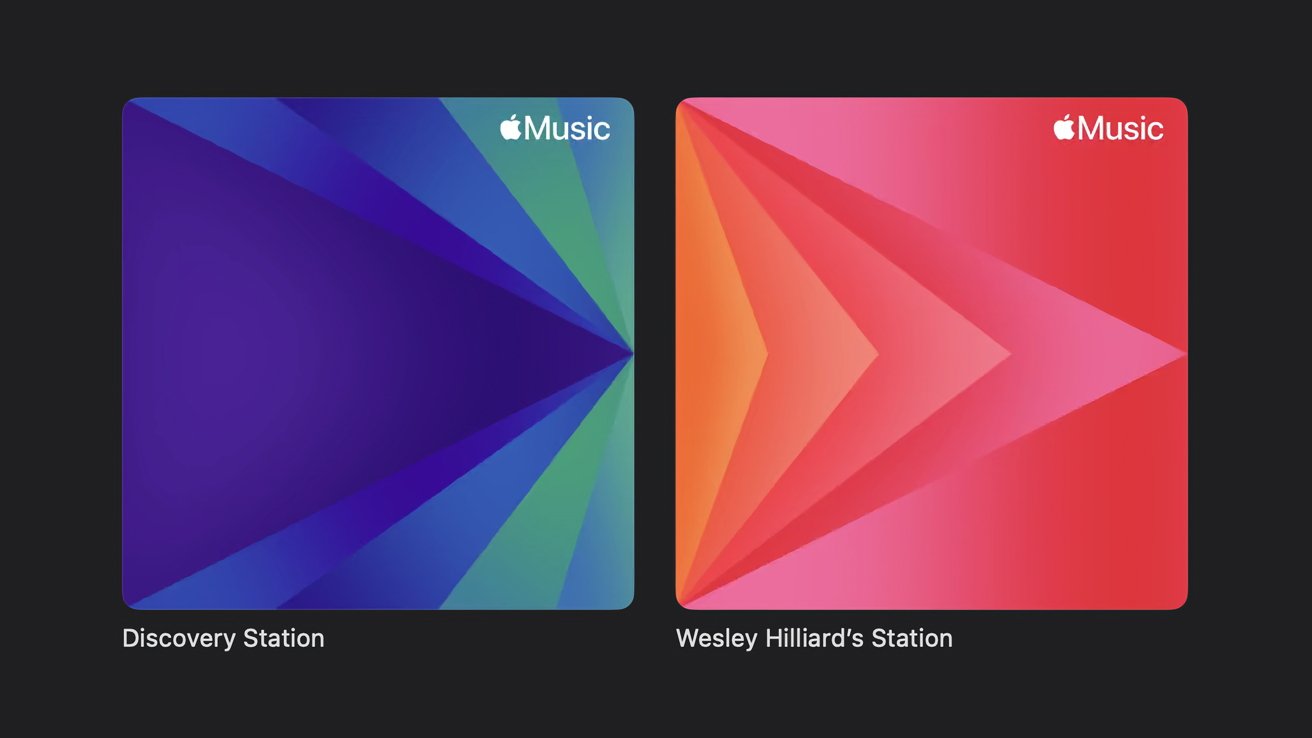
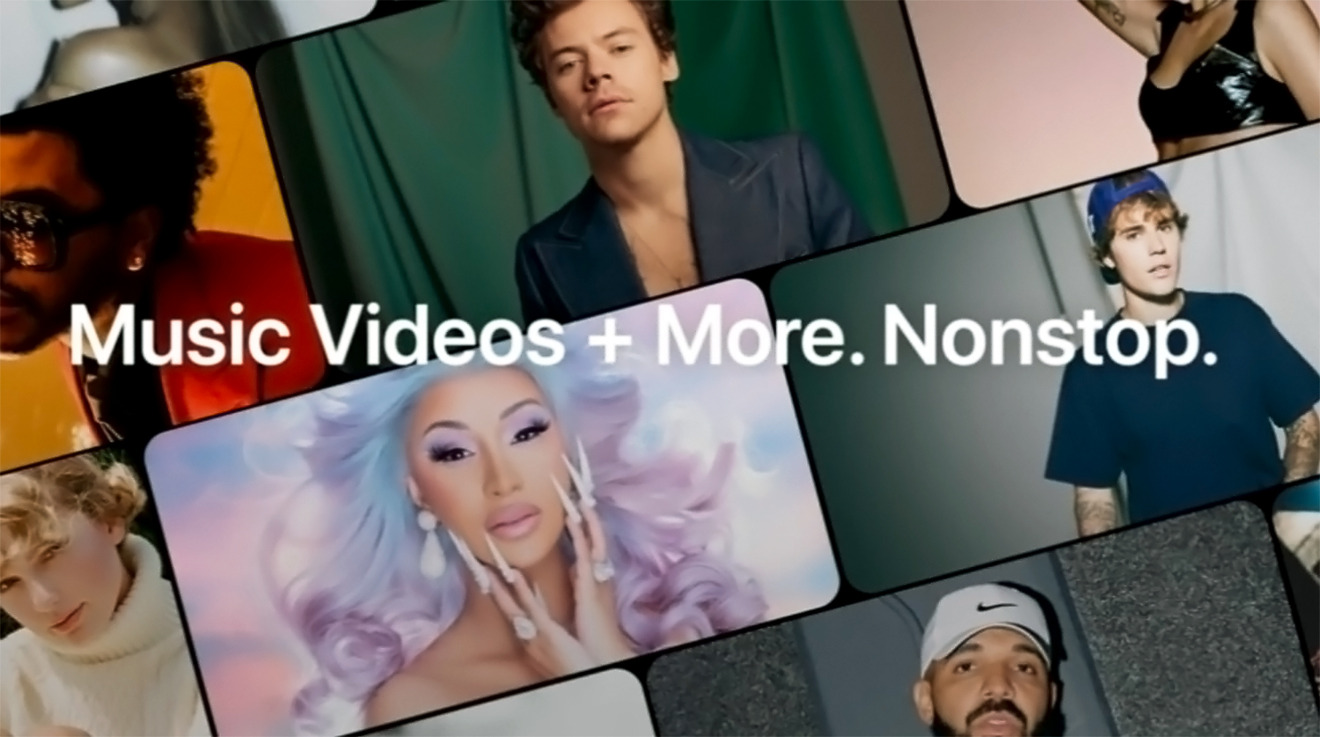
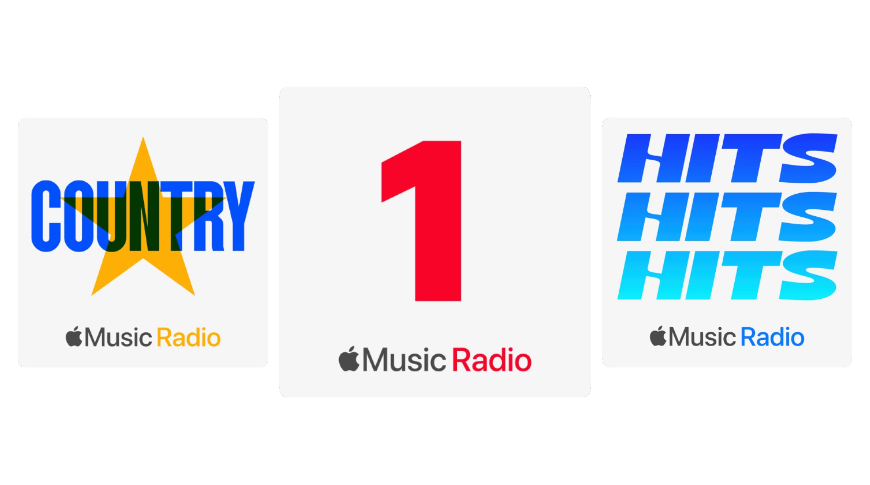

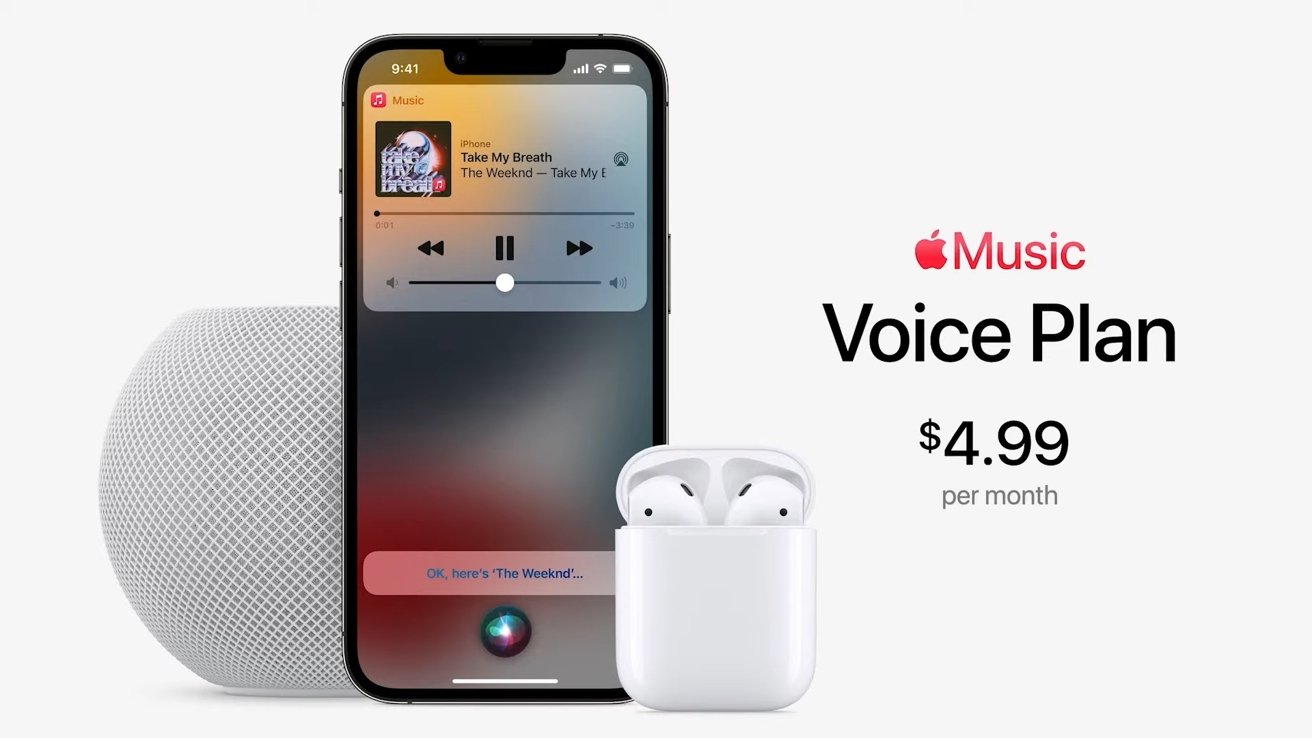
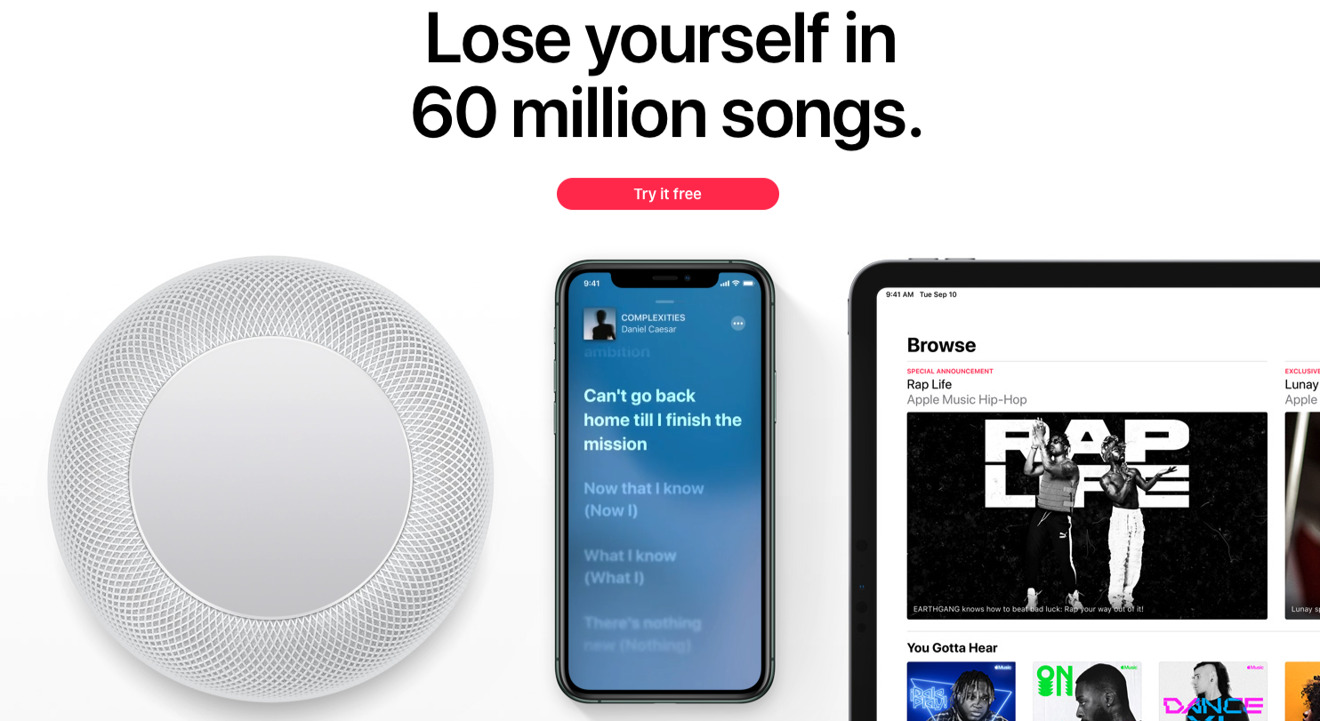
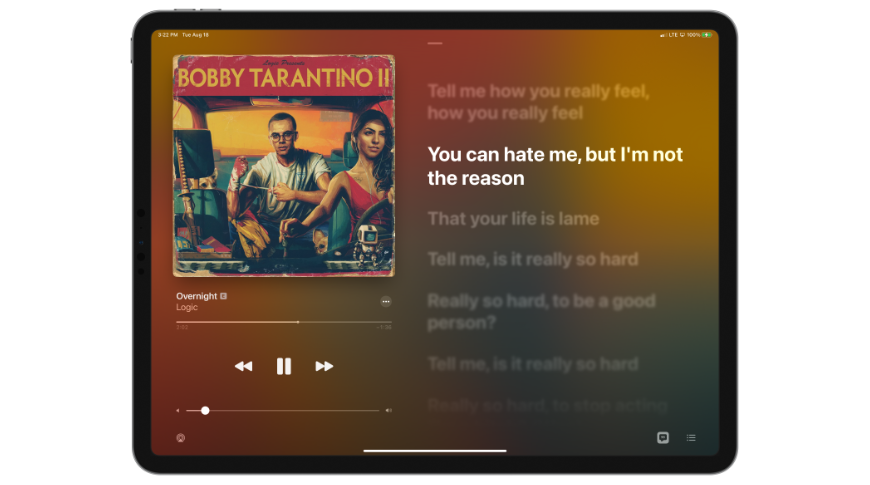
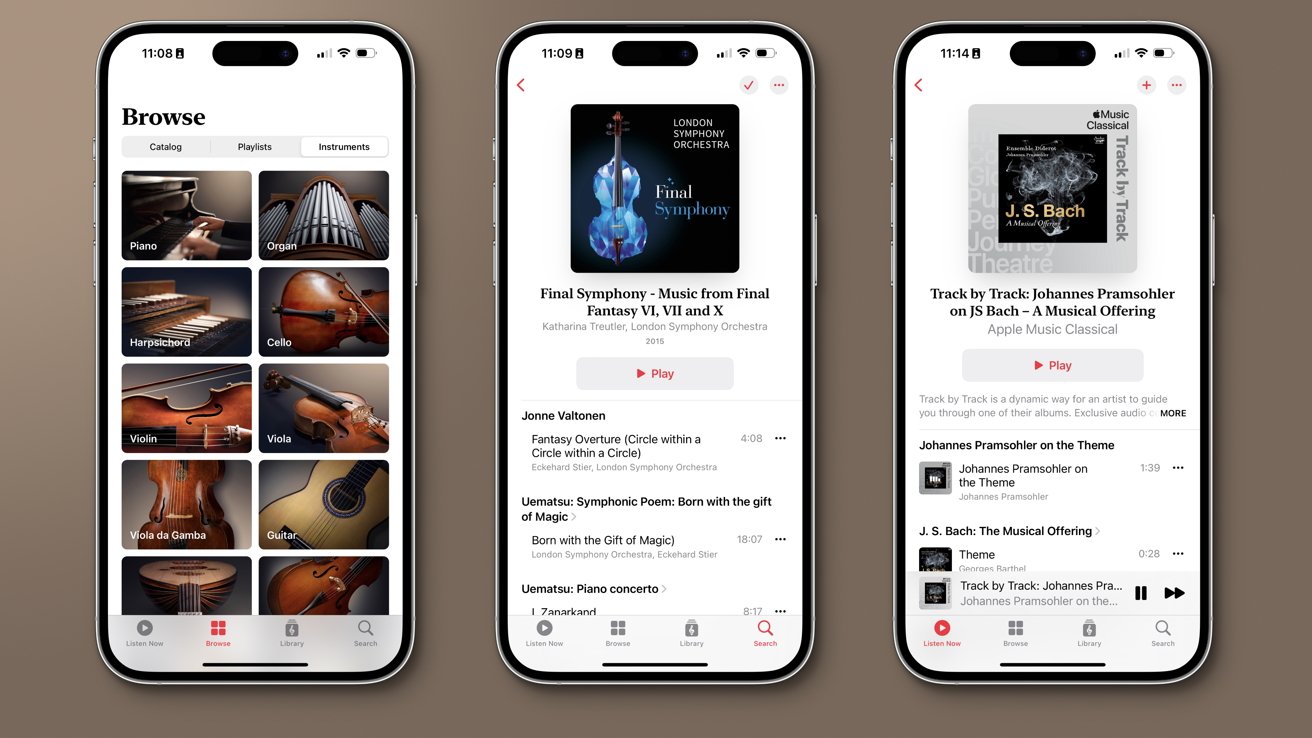
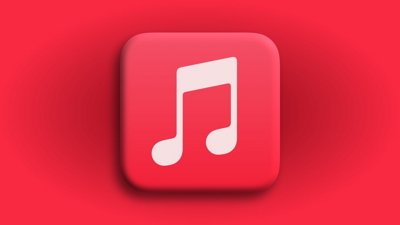
 William Gallagher
William Gallagher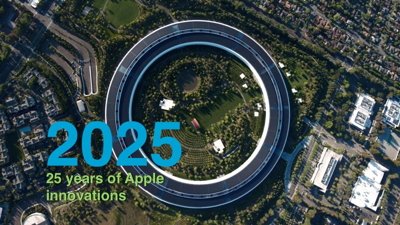
 Daniel Eran Dilger
Daniel Eran Dilger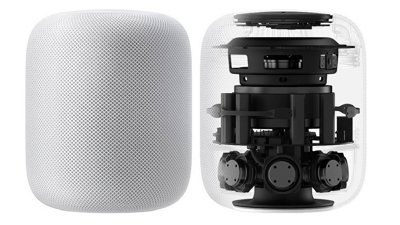

 Amber Neely
Amber Neely